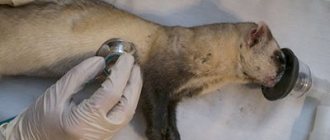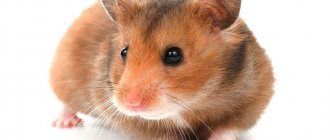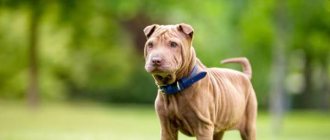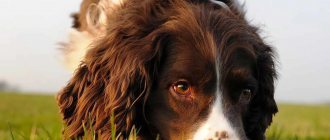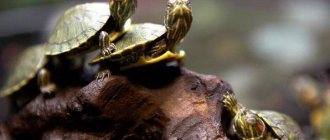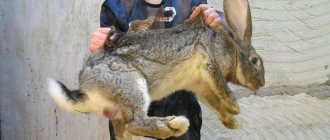Rabbits are cute and charming animals that easily get along with humans, both as pets and as a valuable source of meat and fur. But when breeding eared animals, the question often arises about their lifespan, especially when purchasing decorative individuals.
Wild representatives of the long-eared family are inferior to their domestic relatives in this regard, because in the wild, rabbits are subject to the negative influence of natural conditions. And the domestic species receives a balanced diet, is vaccinated against serious diseases, and does not look for a place to live.
How long do rabbits live?
In households, rabbits live longer than their wild counterparts, but their immunity is much weaker. Therefore, breeders carefully monitor the animal’s condition, select a high-quality and balanced diet, and also show it to a veterinarian in a timely manner.
Wild
Survival in the wild can hardly be called easy, especially when it comes to small rabbits. Such animals have to fight with visible and invisible threats from birth, for example, with the vagaries of nature or predators who are happy to hunt. Therefore, their life expectancy is shorter. The maximum period is three years, but most individuals die in the first or second year of life. The cause may be illness, lack of food due to heavy snow cover, and rabbits may simply drown in their hole during heavy rainfall. In addition, wild animals are exposed to attack from hunters. But even if you place such a rabbit in an apartment, it will not live in it for more than four years, since it is not accustomed to “greenhouse” conditions.
Dwarf
Dwarf individuals are rabbits weighing from 1 to 1.3 kilograms. The lifespan of this breed averages from five to seven years. Individuals are playful, sociable and do not like to just sit in a cage - they need regular activity. To prolong their life, physical activity should be at least one hour a day, for example, running in a wheel or around the apartment. Also, do not forget about quality nutrition.
Fold
The fold-eared breed is especially popular. An animal with drooping ears can live from seven to eight years, and if sterilized, from eight to twelve. Fold rabbits are gentle animals. They are distinguished by their beauty and intelligence. An ideal option for children, as they love communication. A representative of the Dwarf Fold sheep breed is able to live from 9 to 12 years with a high quality of life.
Regular
Farm rabbits often live up to five years. Nobody will keep meat breeds longer, because they stop growing. Some rabbits still manage to live up to eight or ten years if the owners are very careful about their care and are attached to the pet.
Examples of longevity
Considering the average life expectancy of a rabbit, representatives who have crossed the 15-year mark can be considered long-livers.
There are three long-lived rabbits who even made it into the Guinness Book of Records because of their honorable age. One of the record holders was the rabbit Doo. He lived in New Jersey and, thanks to good care and excellent heredity, was able to live to the age of 17. His figure was exceeded by a rabbit from Australia named Flopsy. He is known throughout the world because he did not live a few days before his 19th birthday. But there is a record that not a single rabbit has been able to break; this is a resident of Scotland who lived no less than 24 years.
What affects lifespan?
The lifespan of lagomorphs depends on:
- Characteristics of the breed and heredity. If you are a breeder, you probably know that clean mating is important for subsequent offspring. In this case, the rabbits will live a maximum of years.
- Vaccinations and creation of immunity. Carrying out routine vaccinations prolongs life, because it protects against common diseases.
- Habitats. Make sure that rabbits do not get too cold or overheated, and that they receive the maximum dose of sunlight. They love ventilated rooms, but do not tolerate drafts. During the summer, it is important to let animals go free.
- Hygiene and care. Cleanliness, warmth and care are what will help prolong the life of your pet.
- Food. The fundamental condition for keeping is a balanced diet. It should consist of traditional feed complexes and vitamin and mineral supplements. It is also important to organize nutrition correctly - give food at the same time.
Averages
Average indicators were calculated by experts based on the results of numerous observations. The boundaries are between 4 and 12 years.
At home
Growth in domestic rabbits stops at 18 or 24 months. A healthy rabbit can live in a cage, provided it is well fed and well cared for, for up to 12 years. Decorative dwarf breeds live from 9 to 12 years. Giants live up to 8-9 years, this is dictated by anatomical features. Meat breeds are kept for slaughter, so life expectancy is limited to the period of weight gain, it is achieved by 4-5 years. Fold breeds grow up to 24 months of age, but live much shorter than other toy breeds. The lifespan reaches 7-8 years.
Expert opinion
Zarechny Maxim Valerievich
Agronomist with 12 years of experience. Our best country expert.
Ask a Question
Reference! The record life expectancy of a rabbit was recorded in South America. It amounted to 19 full years.
In nature
The lifespan of ordinary wild rabbits is 3-4 years, this is dictated by the conditions of their natural habitat. Individuals do not live long, since they constantly have to worry about survival, they get food, often become victims of predators or die from diseases.
How to find out the age of a rabbit?
External data will not indicate the exact date of birth. They can only be used to distinguish young individuals from adults:
- Claws. In old individuals they are coarse, opaque and curved inward. If you are offered to buy a rabbit with its claws cut, it is better to refrain from such a purchase. Probably the seller wants to hide the real age of the animal.
- Eyelids. In young rabbits they are clean and have a regular contour. Over time, they will begin to become more prominent and sag.
- The genitals are visible in adults, but in young males they are hidden in the abdominal cavity for up to four months.
It is difficult to determine age by weight, because it depends on a large number of reasons, for example, breed, illness, nutrition. If the diet is incorrect, a six-month-old rabbit can weigh as much as a three-month-old.
Teeth also say little about age. They are covered with plaque from the day when the young animals began to feed like adults. The shade and condition of the teeth depends on the diet: if juicy foods predominate in the feed, then there is less plaque, and if there are grain mixtures, there is more plaque.
What determines life expectancy
Some factors that influence the lifespan of a pet cannot be changed by the owner. You just need to know them and take them into account when buying a pet in order to have at least an idea of how many years he is allotted to live. These include:
- breed of animal;
- heredity;
- breeder's conditions of detention.
Thus, an impulsive purchase of an animal at the market or in a subway passage can result in the death of the rabbit in the very first days due to an infection picked up in a crowded cage.
In another possible scenario, you will soon discover a bunch of chronic diseases in the rabbit if it turns out to be the product of illiterate breeding, including inbreeding. Treating such an animal will take a long time, it will be expensive and, most likely, to no avail.
Fortunately, there are many more factors that a caring owner can and should influence in order to prolong the life of a cute little eared dog:
- the ability to move actively in a safe environment;
- balanced diet;
- lack of stress;
- good living conditions;
- castration or sterilization at a young age.
Large breeds usually live longer than small ones
Signs of old age
There are a number of specific signs that indicate the onset of old age in an animal:
- Condition of the coat. The fur loses its fluffiness and shine, and bald patches appear on the body.
- Eye expression. The eyes of young animals are distinguished by brilliance and rapid eye movement, as the animal tries to record the situation around itself. Aging individuals show no shine or interest in their environment.
- Physiological features. Old rabbits have sagging skin on their bellies, and some breeds may even lose sight and hearing.
Common Causes of Early Death
How long do decorative rabbits live? This question is asked by all caring owners who want to provide their pet with a long and healthy life.
There are a number of recommendations that will help to significantly increase the life expectancy of decorative rabbits.
- do not give the animal food from the common table (sweets, meat, bread, crackers),
- in order to prevent the development of colds, do not let your pet walk in a draft or near heating devices,
- Babies need to be bathed extremely rarely; after bathing, the baby rabbit needs to dry thoroughly, so keep it in a dry towel until completely dry,
- do not allow the animal to be injured, so do not drop or step on the pet,
- to grind down the incisors, which grow throughout their lives, rabbits need to be given information from trees and shrubs,
- domestic rabbits have difficulty withstanding high temperatures, stuffiness, high humidity and dampness,
- hay, like other products, should not be rotten or wet,
- It is recommended to accustom animals to new products gradually,
- domestic eared cats need vitamins and minerals,
- The water in the sippy cup should be clean and at room temperature.
Any pet needs attention and affection. Then the question of how many years decorative rabbits live will disappear on its own. An active and playful animal lives to the maximum.
How old do rabbits grow?
When purchasing a pet, many people think that the dwarf animal will remain so small. How long does a rabbit actually grow? Almost all breeds grow on average up to 6-7 months. The most active growth is observed in the first three months of the animal’s life.
For example, lop-eared rabbits have a wonderful appetite, so they grow quite quickly.
During this period, the animals do not gain their final weight and height, and depending on the breed, they can grow a little more in a couple of months.
The final weight and height of the animal will be formed at 7-8 months. Improper nutrition can lead to obesity in your pet, which will negatively affect its health.
Source: ivethelp.ru
How to extend the life of a pet
Caring for rabbits is not easy. Much of their longevity depends on how well you take care of them. It is enough to follow simple rules of content. High-quality care is not only the organization of food and living conditions, but also taking care of the mental component of pets.
Keeping it clean
The pet must have its own place where it can return while sleeping or to eat food and drink water. Domestic rabbits are usually kept in cages, which are also important to care for. The water bowl, food box and cage surface should be cleaned every day. Using antiseptics is also important, but you can do this once a week.
Nutrition
When compiling a diet, take into account the characteristics of a particular individual. For example, young animals can eat a variety of foods. This is ideal for them as their main goal is to gain weight.
Separately organize the nutrition of females with rabbits and old rabbits that lose their appetite.
What to include on the menu:
- dry cereal food;
- barley and oats;
- combined feeds;
- hay or grass;
- fresh root vegetables;
- vitamin and mineral complexes.
Fill the drinking bowl with fresh water. If necessary, you can add medications to it.
Conditions of detention
Most often, rabbits are placed in cages. Usually the latter are designed for one individual, although in the summer two adult rabbits can be housed in one block if they do not conflict with each other.
The cage includes two combined blocks - one for sleeping with bedding, and the second for feeding, drinking and toileting. Position the cage so that the animal is not too hot or cold. Otherwise, the risk of getting sick increases.
If you decide to keep it in a pit or enclosure, do not forget to take into account the temperature and humidity levels. Aviary keeping is suitable for warm regions, when there is no reason to worry about moving rabbits to a more comfortable place for the winter season.
Safety
Place the cages at a small distance from the ground to protect animals from attacks by rodents and various insects. The latter are considered carriers of various diseases. Regularly treat the outbuilding or shed where the blocks with animals are located using protective products - this will prevent pest attacks.
Protection from stressful situations
Not only the animal’s physical health is important, but also its mental health. Rabbits must live with relatives, so those who adhere to enclosure keeping are against the construction of individual cages. According to breeders, keeping them in cages allows them to maintain hygiene and monitor the amount of food consumed, but pets really need measured communication with representatives of a related breed.
If you suppress your rabbits' desires, this will also negatively affect their mental state. Restrictions in space lead to stress, loss of appetite, and depression. Therefore, when planning conditions, consider the animals' need for outdoor exercise, even if there are restrictions in the form of netting.
What are they sick with?
The lifespan of a rabbit depends on several factors. This includes proper balanced nutrition, rich in protein and containing all the vitamins and minerals it needs, timely vaccination, proper care and quality treatment of diseases.
We recommend that you read the information about whether you can eat meat if rabbits have myxomatosis in this material.
What vaccinations are given to rabbits? Vaccination against viral hemorrhagic disease of rabbits and myxomatosis is mandatory. These diseases are the most common among these animals and claim the most lives of pets: their mortality rate is 99 percent. These vaccinations are given at 45 days, then at 4 months, and then every six months. They must be done even if the rabbit does not have contact with its relatives and is kept at home. These diseases are transmitted by mosquitoes and fleas, as well as through various things.
Find out what the butterfly breed looks like from this article.
Their weak point is also their skin. To avoid its damage, you need to maintain good hygienic conditions for keeping animals.
The drinking bowls must contain fresh, clean water. And the feeders need to be cleaned and rinsed with boiling water daily to avoid the growth of bacteria that cause gastrointestinal diseases. Old food should never be left in feeders for more than 24 hours.
conclusions
- The lifespan of a rabbit at home depends largely on the owners. A person does not influence heredity, but can create comfortable conditions for a pet. Animals need tasty food, timely medical care and communication with the owner.
- Before purchasing a rabbit, find out its pedigree. This knowledge will help you understand what the parents were like and protect your pet from inherited health problems in the future.
- Food must be given of high quality, free from rot and mold, and gradually introduced to new food.
- Monitor the animal’s mobility and do not forget to let it out of the cage. A minimum of an hour a day is required, but it is better to have more physical activity. The main thing is to take weather conditions into account.
- If you notice that your rabbit is acting strange or looking sick, contact your veterinarian immediately. In these animals, the disease progresses quite quickly, so it is better not to delay it.
Basic rules for rabbit longevity
In order for a pet to please its owners for a long time, its selection and care are approached thoroughly:
- You should purchase an animal from trusted breeders; it is advisable that the animal has a pedigree. Before purchasing, you need to find out about possible diseases.
- The living conditions should be comfortable; a new cage should be selected taking into account the future size of the pet. The rabbit leads an active lifestyle, so you should provide it with various tunnels, balls, etc. The animal will need to be walked, preferably outside.
- The location of the cage is selected taking into account the fact that rabbits cannot tolerate temperature changes and drafts. It is not recommended to place a new house near windows and heaters. You should choose a place where there are no too loud sounds.
- There is no need to bathe your pet, however, if there is an urgent need, washing is possible, but the process should not cause much stress to the rabbit. When drying, it is not recommended to use a hairdryer; it is better to wrap it in a bath towel and wait until the fur dries.
- Timely vaccination will strengthen the immune system and protect the rabbit from a number of infectious diseases.
- Do not leave your rabbit on surfaces from which it could fall and be injured.
- A balanced menu is the key to good health. You can use ready-made food or collect fresh grass. There should always be clean drinking water in the cage.
- It is necessary to introduce or remove foods from the diet gradually, since they have a weak digestive system.
- It is strictly forbidden to feed your pet food from the owner’s table.
Recommendations for purchasing
Before visiting the nursery, you should familiarize yourself with the different breeds and find out how long decorative rabbits of different breeds live. Based on the analysis, the appropriate option is selected.
Purchasing decorative rabbits from a nursery allows you to receive a document containing information about the pedigree of the animal. You should not waste time studying it carefully. If you discover information about the presence of genetic diseases in the parents, you should pay attention to another animal.
Before purchasing, you need to examine your future pet yourself or ask a sales consultant to help you do this. The condition of the animal's eyes and ears is subject to examination. They should be free of any foreign secretions. The eyes should be clear, the ears should be clean, the number and size of teeth should be appropriate for age. There should be no dirt around the anus that indicates a disorder of the digestive system.
You should pay attention to the behavior of the proposed pet. It should be active, but not aggressive. Otherwise, it will be difficult to make friends with such a specimen in the future, and the resulting stress will not benefit life expectancy.



